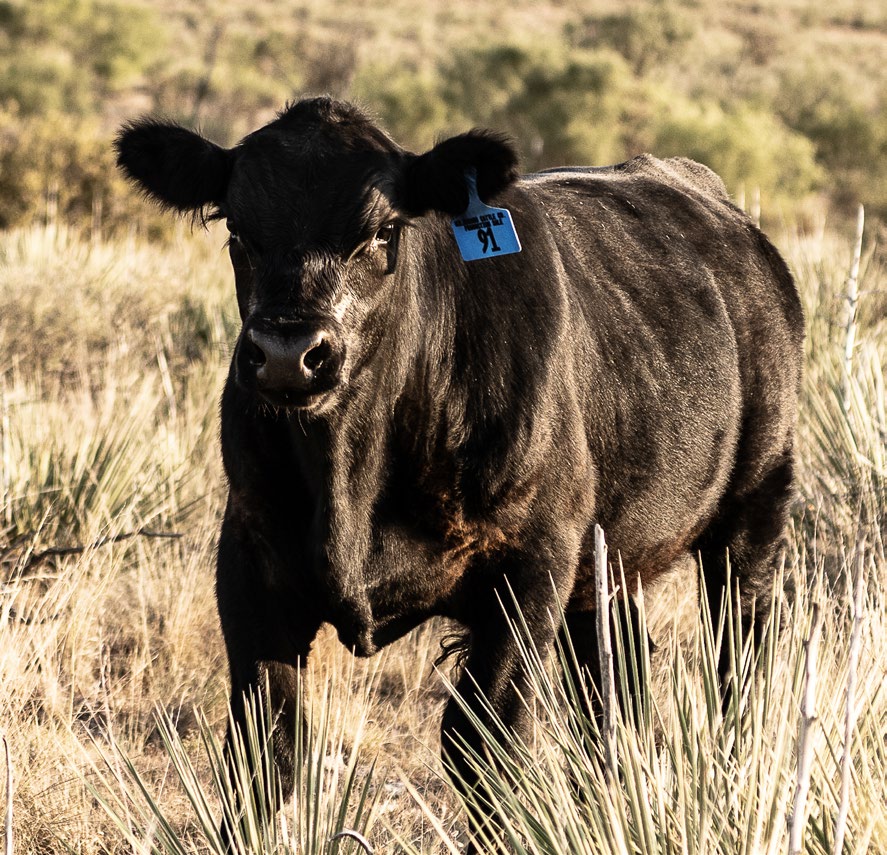By: Henry Hilscher, Ph.D – Livestock Nutrition Center
As we prepare for the summer heat and weaning calves later this year, it is a good time to reflect on last year’s weaning. What worked well and what would you change? Apart from the gate that needs to be fixed or the squeeze chute that needs to be greased before weaning, have you looked at commodity prices? When this article was written, December corn was at $6.00/bu and November feeder calves were $159/cwt. How do those prices affect your strategy for this year? With corn and commodity prices high, ration cost will have a big influence on how and when to wean calves. Determining your expected Value of Gain (VOG) could help you decide whether to retain your calves to a heavier market weight or wean quickly and sell earlier. The VOG is the value per head of the animal at the end of the weaning/feeding period (sale value) minus the value of the animal at the beginning of the weaning/feeding period (purchase value) divided by the weight gain.
For example, based on the last three years of AMS data, a 575 lb steer in Oklahoma City in October could be sold at $149.08/cwt and bring $857.21 per head. A 772 lb steer in the same market could be sold at $142.71/cwt and be worth $1,101.72 per head. Taking the difference in ending and beginning value divided by the weight difference gives you a VOG of $1.24/lb. Every pound of gain is worth $1.24/lb, so if your Cost of Gain (COG – the cost to put on 1 lb of gain) is less than $1.24/lb, it makes sense to increase the weight of your calves. If your COG is above $1.24/lb, then selling them as soon as possible is the best route.

In another example, adding 100 lbs of gain over this same time period has a much lower VOG, so your weaning program would need to change in order reduce COG below the VOG of $0.60/lb.

Market conditions and seasonality will dramatically change VOG. Your analysis should be based on your local markets and should be continually updated along with COG.
Having a good idea of when you are going to sell will help with the weaning process and determine the kind of weaning program to utilize. Mitigating stress should be goal number one. Reducing weaning and handling stress, providing proper nutrition, and preconditioning against disease increases the value of your calves and improves their performance when they enter the growing and finishing period.
Separating calves from their dams at weaning causes behavioral changes and stress. Vocalization, walking fences, and reduced intake can all result in reduced performance and health concerns. Pre-weaning management, 2 to 3 weeks before weaning, is important to ensure calves can continue to grow and stay healthy when exposed to the stressors associated with weaning. Giving shots early will help develop immunity, and getting calves used to eating feed before you wean them can have a big impact on stress at weaning. Start with some supplementation on pasture. Calves will learn by watching their mothers eat.
If calves are allowed to continue grazing after weaning, consider the nutrient content of the forage. Warm season forages are declining in nutrient content at the end of summer. Weaned calves grazing warm season grasses in the fall may require supplemental feed depending on your weaning plan. Consider the price per pound of protein and energy in your feedstuffs and which sources offer the greatest return on investment. Cheaper options might not always be better options.
Calves moving from grazing to a dry lot for weaning must learn to eat from a bunk. Ensure that each calf has at least 18 inches of linear bunk space. The feed bunk should be easily accessible to the calves. Unlimited access to fresh, clean water is essential for weaned calves.
Make accommodations to familiarize the calves with new water sources. Allowing the water source to overflow for a brief time may help calves find the water. Maintaining feed intake is crucial. By feeding long stem, high quality grass hay in the first two- or three-days post-weaning, you can get the calves accustomed to eating from the bunk and establish good eating behaviors. After two or three days, begin adding some energy feeds to the diet.
The diet can be delivered as a total mixed ration, or the energy feed can be fed on top of the hay. While energy is important, energy sources that are high in starch, such as corn, should be limited to 50% or less of the diet dry matter. Ionophore additives also boost feed efficiency and average daily gain. When feed prices are high, adding ionophores to feed supplements are a good choice to improve weight gain.
In hot weather, consider pasture condition and air flow. Lack of shade can promote crowding. Read the recent article on heat stress by Dr. Cody Welchons on more info on shade mitigating heat stress.
For more information, contact your LNC representative to discuss your weaning program.
References: Management, Health, and Nutritional Considerations for Weaning Calves NebGuide http://www.ianrpubs.unl.edu/sendIt/g2057.pdf, USDA Agricultural Marketing Service. Feeder Cattle Report Oklahoma National Stockyard Feeder Cattle 2020-2018 https://mymarketnews.ams.usda.gov/public_data?slug_id=1280

Recent Comments